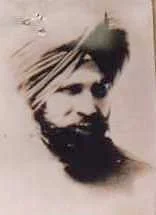June 8 - 9th 1984
The ever FLOURISHING khalsa
“Bands of Sikh horsemen were to be seen riding at full gallop towards Amritsar, running the gauntlet of Mohammadan troops. The message would be sent round the distant villages, “who will ride tonight?” Death was a martyr’s crown on such occasions.”
Description of Sikh rebels during the Mughal Rule riding towards the Golden Temple on hearing of it being attacked; Gordon J.H.; The Sikhs (London, 1904)
Although there was a media blackout in Punjab, news of the assault on Sri Darbar Sahib managed to reach neighbouring villages and over 5,000 Sikh soldiers spontaneously mutinied against the Indian army in a bid to get to Amritsar to join the Khalsa Fauj.
Every Sikh soldier swears an oath of allegiance to Dhan Sri Guru Granth Sahib Ji. Had there not been a media blackout and mass propaganda from the Indian state, the scale of Sikh solider rebellion would have been much greater. The Indian state did not publicly admit that any revolt even took place, when it did it referred to the troops as having deserted rather mutinying.
It is interesting to note that prior to the attack the Sikh Regimental Centre was purposefully shifted outside of Punjab to Uttar Pradesh (by comparison, the Bihar Regimental Centre is in Bihar and the Rajputana Rifles are based near home at Delhi). Military analysts have commented that although the Sikhs that defended Sri Darbar Sahib kept the army at bay for over a week, had the Sikh Regiment been stationed in Punjab, the outcome of the battle would have been entirely different.
The courage and dedication shown by the Sikh mutineers is awe inspiring, facing impossible odds, they did not hesitate to stake everything to protect their Sikhi and the Quam. It is on record that in stark contrast to the Indian state, who was indiscriminately massacring Sikhs, the Sikh soldiers engaged only with Indian forces.
Associated Press, as reported in The Palm Beach Post – Jun 18, 1984; 5000 Sikh troops deserted in over 9 states.
The Ottawa Citizen (Jun 12, 1984) reported that even in the North Eastern State of Assam 345 Sikhs were arrested for marching towards Amritsar to “liberate their holiest shrine”. The Indian Government was well prepared and the Army had already been deployed to check the advances of the rebel Sikh troops who were travelling thousands of miles from 9 different States. towards their ancestral homeland. Although desperately outnumbered, the Sikh soldiers faced the Indian Army and fought gun battles in Uttar Pradesh, Maharashtra and Gujarat in which hundreds of Sikhs were killed by the military.
Those that survived or were captured, were dishonourably discharged from the army, stripped of all their privileges and pensions, and imprisoned for between 5-10 years.
New York Times news service as reported in the Gainesville Sun – Jun 12, 1984




